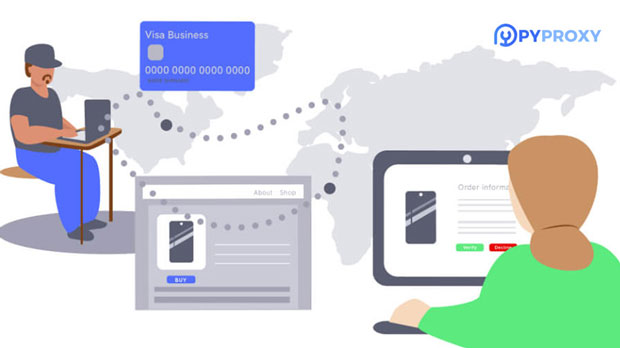FoxyProxy is a widely used tool that simplifies proxy management for individual users. However, when considering its suitability for enterprise environments, several key factors must be analyzed. Enterprise-grade proxy management requires robust features that cater to complex infrastructures, advanced configurations, and scalable operations. As businesses grow, their need for efficient network management intensifies. In this context, it becomes crucial to assess whether FoxyProxy, traditionally seen as a tool for individual use, can meet the demands of larger organizations that require secure, reliable, and scalable proxy solutions. This article delves into the capabilities of FoxyProxy and explores whether it can be leveraged for enterprise proxy management. Overview of FoxyProxy’s Core FeaturesFoxyProxy is a browser extension designed primarily for managing proxy settings. It provides users with a simple way to switch between multiple proxy servers depending on their needs. The tool integrates seamlessly with popular web browsers, allowing individuals to quickly change IP addresses, route traffic through different servers, and maintain anonymity when browsing.However, when it comes to enterprise-level proxy management, FoxyProxy’s core features—though practical for personal use—may not be sufficient on their own. Enterprise environments require tools that provide centralized control, robust security features, advanced user management, and integration with various internal and external systems. In addition, enterprises often have specific needs such as enforcing consistent policies across various devices, monitoring network traffic, and ensuring compliance with data protection regulations.Key Considerations for Enterprise Proxy ManagementFor any organization, especially large enterprises, proxy management needs to go beyond simple IP switching. Some key considerations for enterprise-grade proxy management include:1. Scalability: A solution should be capable of supporting thousands or even millions of users, managing a large number of devices and network nodes without compromising performance.2. Centralized Control: It is essential to have centralized control over proxy configurations to enforce consistent policies across an organization’s network.3. Security and Compliance: Proxies are often used for security purposes, so the solution should support encryption, access controls, and meet industry standards for data protection and privacy compliance.4. Customization and Integration: The proxy management tool must be able to integrate with other enterprise systems, such as security software, monitoring tools, and directory services, to ensure smooth workflows.5. Ease of Use: Despite its advanced features, the tool should not require extensive training to use effectively. A balance between functionality and ease of use is essential.FoxyProxy’s Strengths for Individual UseFoxyProxy excels in areas that cater to the needs of individual users or small teams. Some of its strengths include:- Ease of Setup: Setting up and switching between proxies is quick and intuitive, making it accessible even to users with little technical experience.- User-Friendliness: With a minimalistic interface and easy-to-understand options, it’s designed for quick proxy management without overwhelming users.- Flexibility: It allows for multiple proxy profiles, which can be quickly activated depending on the user’s needs, making it a versatile tool for people who frequently change locations or require different proxy settings.- Compatibility: FoxyProxy integrates easily with popular browsers, enhancing convenience for individual users who want to manage proxies without using additional software.However, these advantages are primarily suitable for personal or small-scale use cases. They fall short of addressing the complexities of enterprise-level needs, such as managing large networks, enforcing organizational policies, or integrating with existing IT infrastructure.Challenges of Using FoxyProxy in an Enterprise EnvironmentWhile FoxyProxy has many strengths, it faces several challenges when used for enterprise-grade proxy management. These challenges stem from the tool’s focus on individual use rather than corporate-scale operations.1. Lack of Centralized Administration: One of the biggest limitations of FoxyProxy for enterprises is its lack of centralized management. In an enterprise, administrators need to configure and monitor proxy settings across numerous users, devices, and network configurations from a single interface. FoxyProxy does not offer a comprehensive way to manage multiple devices or user profiles from a central console.2. Limited Scalability: While FoxyProxy can handle multiple proxy profiles, it does not have the scalability required for larger organizations. Enterprises often require systems that can handle large volumes of users and devices simultaneously, without performance degradation.3. Absence of Advanced Reporting and Monitoring: Enterprise proxy solutions often come with advanced analytics, traffic monitoring, and reporting capabilities. FoxyProxy lacks built-in monitoring tools, which are essential for detecting anomalies, auditing user activity, and ensuring network security.4. Security and Compliance Issues: Although FoxyProxy allows users to connect to various proxy servers, it does not offer the level of security features required by enterprises. Features like user authentication, secure encryption protocols, and compliance with data protection regulations are critical in an enterprise environment. FoxyProxy does not fully address these needs, particularly when handling sensitive corporate data.5. Integration Limitations: Enterprises typically require tools that integrate with other systems, such as internal databases, security software, and enterprise-grade directory services. FoxyProxy does not have robust integration capabilities that can connect with these systems in a seamless and automated way.Alternative Enterprise Proxy Management SolutionsFor enterprises that require advanced features like scalability, centralized management, enhanced security, and integration with existing IT systems, there are more suitable proxy management solutions available. These solutions offer enterprise-grade proxy management, providing:- Centralized Management: Administrators can configure, monitor, and manage proxy settings across large numbers of users and devices from a single control panel.- Scalability: Enterprise proxy management solutions are designed to handle the complex and extensive requirements of large organizations.- Advanced Security: These tools offer encryption, secure access controls, and other features to ensure the security of corporate data and comply with relevant data protection laws.- Comprehensive Monitoring and Reporting: Businesses can gain insights into network traffic, detect security threats, and generate detailed reports for audits.- Seamless Integration: These solutions can integrate with other enterprise systems, such as firewalls, identity management systems, and network monitoring tools, to streamline operations.While FoxyProxy is an excellent tool for personal proxy management, it is not equipped to handle the complexities of enterprise-level proxy management. The lack of centralized control, scalability issues, security limitations, and absence of advanced monitoring make it unsuitable for large organizations with sophisticated IT infrastructures. Enterprises should seek specialized proxy management solutions designed to meet their unique requirements, ensuring secure, efficient, and compliant proxy operations across their network.
Apr 02, 2025
![arrow]()




























































